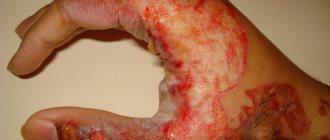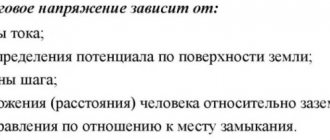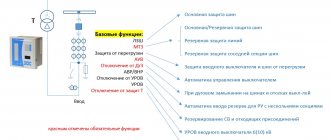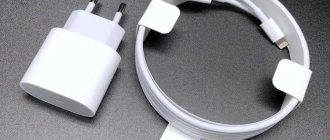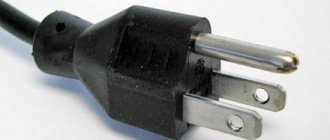Almost any household item used at home can cause electrical injury if operating conditions are violated or if the device itself malfunctions. If you receive an electrical injury, it is important to immediately provide first aid to the victim. This will help save human life. Let's consider what to do first if an electric shock occurs.
What happens to a person during an electric shock?
As mentioned above, electric shocks are relatively rare. But, unfortunately, such a phenomenon causes the death of the victim. In addition, today it has not been possible to establish exactly what voltage causes electrical injury.
Many people are interested in what happens to a person at the moment of electric shock. Let's look at this point in more detail:
- when the current comes into contact with the body, a person feels severe pain, which expresses horror on the face, a sharp contraction of the legs and arms, as well as paleness of the skin;
- at the moment of electric shock, the victim may be thrown away from the source. In addition, numbness of the legs occurs, as a result of which it is impossible to stand up independently;
- with this phenomenon, numbness of the muscle group located in the chest is observed. This results in the person being unable to breathe. As a rule, it is the numbness of the sternum that is the main cause of cardiac arrest, and, as a consequence, death;
- Serious negative changes are also observed in the skin. Severe burns often form on the body, even to the point of charring. Moreover, such severe lesions affect not only the places where the current was exposed, but also neighboring areas;
- From exposure to current, gray spots are often observed on the body. They are also called “current signs”. They do not hurt, do not cause discomfort and do not become inflamed;
- negative changes also affect bones. After an electric shock, they become brittle, in some cases cracks and deformation form. This point is important to consider, especially when providing assistance to the victim.
Electric shock is considered one of the most dangerous. In the absence of timely assistance, there is a high probability of death, since the mechanism of action of electric current on the body is quite complex. In addition, the effect of electricity on a person will be different. Therefore, it is important to promptly help the victim.
Educational program on electrical injuries: from burns and cataracts to fractures and fibrillation
In the comments to our article about the death of a Malaysian schoolboy wearing headphones, we promised to make a post about electrical injuries, as well as the peculiarities of the pathogenic effect of electric current on the organs and tissues of the human body. We promised - we deliver.
The post was prepared in collaboration with dlinyj, who acted as a reviewer and consultant on issues of the physics of electricity and labor protection, as well as co-author of the section “What kills current or voltage?” Under the cut, I described in detail the mechanisms of electrical injury, medical consequences, and also analyzed several tragic cases associated with unusual electrical injuries. In preparing the material, I used my own medical experience, facts known from the media, as well as literature and documents available on the Internet (photos of lesions contained in the article may be considered shocking and unacceptable by some readers).
Moderator warning. The publication contains images of body parts of traumatized people, which can affect the mental state of sensitive adults and children.
What kills: current or voltage?
Let's start with this holivar-forming question, without which, perhaps, not a single popular post about electrical injury can do.
Without much deliberation, I’ll write that the main damaging factor is current, it’s what kills. As we all know from school physics course, current = voltage/resistance. I believe that it is correct to say that voltage (potential difference) is a condition for damage, but in itself does not cause damage. For example, the voltage of static discharges when removing a woolen sweater reaches several kilovolts, but they do not cause any significant damage, since the current is negligible. Therefore, in such cases, tension is compared with height, which in itself does not lead to death and cannot be its cause, in contrast to the very fact of falling, in which height becomes a significant condition for the occurrence of death.
It is worth remembering what electric current is.
As the Russian name suggests, current is a flow, that is, the flow of charged particles. How many of them flow per unit time through a unit cross-section of a conductor. The greater the number of particles, the greater the current. It is the flow of particles that causes human injury. The amount of current that can pass through a person is determined by the applied voltage, the internal resistance of the current source, and the resistance of the person's body. As a rule, current (and voltage) sources have an output current several orders of magnitude higher than lethal for a person, and in this case, the determining factor in the magnitude of the current is the resistance of the human body and the magnitude of the applied voltage. The resistance of the human body depends on the individual characteristics of the person and his physical condition. For example, a sweaty person has a very low resistivity, and there have been cases when a person was killed by the voltage at the contacts of a regular battery. dlinyj
Electrical trauma according to WHO standards, tissue processes and severity of injury
Today in various literature you can find a lot of classifications and definitions of electric shock to a person - they are all interesting, but they bring a lot of confusion.
In my opinion, we should adhere to the generally accepted definition adopted by WHO. Thus, according to WHO standards, electric shock is usually called electrical injury (no shocks or other types of injury are distinguished separately). According to WHO standards, any injury is physical damage to organs and tissues that occurs under the influence of one or another type of energy. Therefore, electrical injury is any damage (impaired activity) caused by exposure to current, that is, electrical energy.
Types of current exposure
There are three types of effects of electric current on the body, which fall under the definition of electrical injury:
- biological - irritation and excitation of muscle and nerve fibers, disruption of bioelectric processes;
- thermal - burns and heating of tissue under the influence of current;
- electrolytic - a change in the physicochemical composition and properties of biological fluids (blood, lymph, cerebrospinal fluid, etc.).
Electric current can damage all tissues and organs without exception.
The skin, peripheral and central nervous systems, muscles, tendons, and cardiovascular system are primarily affected. It hits bones, joints, and gastrointestinal tract organs somewhat less frequently, but if it hits, it hits hard, almost certainly. Severity of defeat
So, we list the factors on which the severity of electrical injury depends:
- current path, localization of the lesion;
- the magnitude of the damaging current (A);
- type of current (alternating or direct);
- current frequency (Hz);
- body resistance (Ohm);
- humidity and air temperature (as the temperature rises, sweating begins, which reduces body resistance);
- condition of the skin (presence of wounds, skin diseases, sweat, etc.);
- Tension is also taken into account when assessing, but contrary to the established stereotype, it does not have a decisive significance.
Body resistance
Body resistance is perhaps one of the most important and most difficult factors. It is variable and depends on complex biochemical and biophysical characteristics, tissue properties at the current time, and environmental characteristics. In other words, this is one of the factors that makes any prediction of electric shock (with a known magnitude) comparable in accuracy to the theological treatises of the 14th century or the predictions of Nostradamus.
The table below shows the resistance ranges of the tissues of our body; from it it is easy to understand that the values vary over a very wide range.
Classification of currents by type of impact
The magnitudes of the damaging current are conventionally divided into 3 ranges, depending on the predominant effect the current has. Thus, currents are released:
- imperceptible - from 0.5 - 1.5 mA;
- felt - 3 mA - the effect of the current is felt tactilely;
- releasing - 6 mA - causes muscle spasm, while grabbing the conductor, the affected person can release it;
- non-releasing - from 10 to 15 mA - the affected person cannot release the conductor without assistance;
- asphyxiating from 25 to 50 mA - can cause paralysis of the respiratory center;
- fibrillation from 100 to 200 mA - causing fibrillation (random contraction) of the heart chambers - one of the types of cardiac arrest.;
*Sometimes the so-called “thermal” or “thermal” - low direct currents (from 5 A), causing a feeling of warmth, burning.
The table below correlates the ranges of alternating and direct current values and the damage that they can cause (given, according to the manual of S.G. Novikov, associate professor of the Department of Environmental Engineering and Occupational Safety of the Moscow Energy Institute).
Current paths
Another important and often decisive factor is the current path, which depends on the entry and exit points of the discharge. The most dangerous routes are those that pass through vital organs (brain and spinal cord, heart, lungs, liver, kidneys). Typical cases of electrical injury through headphones are when the current path flows through the head (almost all known incidents resulted in death).
If the current path does not pass through vital organs, then the influence on them occurs exclusively as a reflex, and accordingly, the danger to vital functions is much less. Current paths through the human body are sometimes called loops. The most dangerous of them are considered: “arm-arm” (40% of deaths), “head-legs” and “head-arm” (together about 20%), “right arm-legs” (20%), “left arm -legs" (17%), other deaths account for approximately 3%.
The table below shows the percentage of damaging electrical current passing through the heart for various current paths:
A little about the mechanism of tissue damage
According to Ilisheva, after the current overcomes the resistance of the skin, it penetrates the tissue and causes electrolysis, which, in turn, leads to an imbalance in the ionic balance in cellular formations. Rapid tissue necrosis during electrical trauma is caused precisely by the polarization of cell membranes during electrolysis. The following happens:
- ions with a positive charge are concentrated at the anode, the environment becomes acidic;
- An accumulation of negatively charged ions occurs at the cathode, which provokes an alkaline reaction.
These processes of ion concentration change the state of cells and lead to coagulation necrosis in areas with an acidic reaction and colliquation in areas with an alkaline reaction.
When a current acts on nerve fibers, perineural edema, necrosis (death) of neuronal structures, and thrombosis of surrounding vessels are observed. Similar processes occur in muscle tissue. Before the development of necrosis, the nervous tissue is irritated, and tone and convulsive contractions occur in the muscles, which in turn lead to mechanical damage (see below).
The skin is affected mainly at the points where the charge enters and exits; thermal phenomena can cause burns and inclusions of foreign metal particles (see below), and the electrochemical effect of the current can cause changes in the color of the skin (see current marks).
Types of electric shock
Some authors distinguish three types of electrical injuries, namely local, general and mixed.
Local injuries include burns, electrical marks (tags), metallization of the skin and mechanical damage. General are those electric shocks in which general symptoms are expressed, in the form of damage to the central nervous and cardiovascular systems. Mixed ones have characteristics of both local and general. In fact, such a division is very arbitrary. Most often, mixed electrical injuries occur. Their percentage is significantly higher than the 50% stated in some occupational safety manuals, which were obviously written by people who have not dealt with electrical injuries in practice. For 9 years in disaster medicine, I have only encountered mixed types. I believe that this happens due to the fact that an electric shock that can cause local damage will certainly lead to the development of general symptoms. Therefore, I think it is more correct to talk about local and general manifestations of electrical trauma, but not about local and general electrical trauma.
Electrical burns
Among local manifestations, the so-called electrical burns, which are divided into contact and arc. I write “so-called”, due to the fact that the burn is caused by the high temperature of the conductor or the flame of the electric arc, i.e. in fact, it is thermal, but is burdened by other damaging factors of electrical trauma.
Contact ones develop when the skin comes into direct contact with the surface of the conductor, where due to the high current density and skin resistance, the temperature locally increases. They are characterized by a relatively small affected area (usually 1% of the skin or less) with varying depths of damage and severity of the condition.
Electrical contact arc burns
, often more severe, are often accompanied by extensive 50% or more, and deep (up to degree 4) lesions. This is due to a higher temperature, and also, often, a larger area of damage. Arc burns often cause burn shock and burn disease. In cases of electrical injury from gadgets and household appliances - arc burns - the thing is not so brutal, since the arc is often small, and, accordingly, the affected area is smaller.
Arc electrical burns
Current marks
The marks (aka signs) are gray or yellowish oval-shaped spots with a small depression in the center. Signs can appear immediately or over time; cases have been described when they disappeared without a trace. This sign often occurs with severe general symptoms at the sites of entry and exit of the charge. Does not require special care, but can be used as a valuable diagnostic sign.
Current marks on the palm
Current marks after a lightning strike
Metallization
Metallization is the intradermal (located in the thickness of the skin) penetration of small metal particles that have melted under the action of an electric arc. The metal heated by the arc, damaging the upper layers of the skin, quickly cools down, transferring heat to the very heat-intensive skin and hardens in a thermocoagulated burn surface (in a scab).
metallization
With minor, shallow (down to the germ layer of the skin) skin lesions, metallization may disappear without a trace, as well as the pain associated with it, but more often these lesions are deeper and leave scars.
Eye lesions
Metallization of the cornea of the eye is especially dangerous.
Such damage leads to temporary, long-term treatment, and sometimes incurable blindness. Local ophthalmological manifestations can also include clouding of the lens (cataract), which sometimes occurs when a discharge passes through the head. Paired stellate cataract after electrical trauma
Fractures and other mechanical damage
Interestingly, electrical trauma can lead to severe mechanical damage, for example, dislocations, ligament ruptures, fractures, and also cause bleeding from damaged vessels. The main cause of such damage is considered to be convulsions that develop as a result of the irritating effect of current.
Thus, the Malaysian schoolboy we wrote about experienced bleeding where the skin came into contact with the headphones.
Bleeding from the ear after an electrical injury through headphones
In 2017, in Pervouralsk, a case of fractures of the forearm bones was recorded in a child as a result of an electrical injury. Mechanical damage due to electric shock does not include injuries received indirectly, for example, when falling after receiving an electric shock.
General manifestations
The general effect of the current leads to disruption of the functioning of vital organs and systems; the current can affect all human organs and tissues. Depending on the factors described above, the effect can be completely different in severity and severity of the clinic.
There are 4 degrees of severity of electric shock:
- 1st - convulsions with preserved consciousness;
- 2nd - convulsions with loss of consciousness, but without breathing or circulatory problems;
- 3rd - convulsions combined with loss of consciousness, as well as breathing disorders (tachypnea, dyspnea) and (or) cardiac activity (arrhythmia, tachycardia);
- 4th - clinical death, usually resulting from fibrillation or damage to the respiratory center (located in the medulla oblongata).
*Clinical death - lack of breathing, cardiac activity, consciousness. *Fibrillation is random contraction of the heart chambers.
Gadgets and electrical injuries
The widespread use of gadgets has led to a significant increase in the number of electrical injuries sustained in everyday life.
It is quite natural that all of them are caused by gadgets charging from the network, and, often, in situations where the user carelessly neglects electrical safety rules. There are many similarities between similar cases. While conducting a small content analysis of cases over the past 8 years, I noticed that most occur in developing countries with a hot, humid climate (China, India, Malaysia, Brazil). In the vast majority of cases, the cause of damage is a gadget charging from a low-quality charger with problematic galvanic isolation. In these countries, frame house construction with metal supporting structures is common, to which floor coverings are attached using conductive elements. In total, I counted 42 cases of this type of electrical injury. Regions with a hot climate, a relatively low standard of living and cheap frame houses included 36.
Below I will give only the most famous and high-profile incidents; I will not hide the fact that when making this selection, I tried to give examples close to the case in Malaysia (headphones + smartphone + charger), in order to demonstrate that they are not isolated and are 100% lethal:
Malaysian incident, 2022. Teenager, headphones, charging smartphone.
Brazil, 2022. Case of a girl and headphones (possibly the influence of lightning) India, 2022. Electrical injury in headphones (woman, 46 years old.
India, 2022. Electrical injury with headphones (Tad Singh, male, 22 years old)
Electrical injury when disconnecting the smartphone from the USB cable. Case in an Internet cafe in Wuhan, China - 2016, (teenager, Internet cafe, smartphone, PC).
Malaysia 2022. Case with a smartphone connected to a power outlet.
London. Electric shock from a charging smartphone in the bathroom (male, 32 years old)
China. Coma due to electrical trauma - 2013, charging smartphone.
China, 2022. Teenage girl, 14 years old, damaged USB cable for smartphone charger.
Let me emphasize once again that all cases of electrical injury through headphones that I know of are fatal, which confirms the danger of head-limb loops.
One of the situations described above was recorded on video in China in 2016.
While disconnecting the smartphone from the PC, the gamer received a fatal shock. I was especially struck by the behavior of those around me, who practically did not provide assistance. The video is not recommended for viewing by children and the impressionable.
In all cases, except for the Brazilian one (where there was probably a lightning strike), grounding was involved (through bathtubs, flooring elements, a grounded metal table).
One way or another, all such cases fit into existing ideas about electrical injuries and confirm much of what was written above. With detailed analysis, the apparent paradox turns into a completely ordinary story for burn centers, intensive care units and pathology bureaus.
Bottom line
I sincerely hope that the educational program presented was helpful.
We will be grateful if you share your opinion in the comments. Perhaps you have experienced an electrical injury or its consequences, or you regularly encounter this at work, tell others about your experience. Perhaps there will be another post regarding first aid - write if this is relevant to you. Photo content used:
steemit.com/comedy/@grow-pro/finding-my-funny-ass-underwater-flooding-and-funny-gifs-w-grow-pro www.intechopen.com/books/forensic-medicine-from-old- problems-to-new-challenges/epidemiology-and-diagnostic-problems-of-electrical-injury-in-forensic-medicine cdn.intechweb.org/pdfs/19164.pdf accessmedicine.mhmedical.com/content.aspx?bookid= 1763§ionid=125437574&jumpsectionid=125437642 vpr.sdamgia.ru/problem?id=807 ppt-online.org/44358
Advertising load We sell electronics, a lot of different ones. If you follow the operating rules, the electronics we sell do not cause electric shock. Moreover, we do not know of a single case in which our customers received electrical injuries from goods purchased from us.
How and why do electric shocks occur?
Injury due to contact with current is one of the most dangerous types of injury, since such a phenomenon often leads to death.
You can be injured in this way in a number of cases:
- if there are exposed live wires in the electrical appliance and a person touches them with bare hands;
- touching an emergency metal structure that has not been de-energized;
- when simultaneously touching two energized phases;
- when simultaneously touching a wet wall and a power source;
- if you stand in an area where there is a broken power line and a live cable lies on the ground;
- when trying to repair an electrical device without following safety rules;
- if you stand under a tree during a thunderstorm and lightning strikes and talk on the phone.
Various household devices make our lives easier. However, to prevent “home helpers” from becoming a source of electric shock, it is important to use them correctly. Of course, an electric shock from such devices rarely ends in death. But they can cause great harm to organs and systems.
How to cut wires?
If the electrical installation has a voltage of up to 1 kV, then you can use wire cutters or an ax. You can use a knife. However, there is a major omission here. If you want to cut wires, you need to take care of yourself. Tools must have insulated handles, otherwise you will harm yourself. If the ax or knife does not have insulating handles, then dielectric gloves can be used.
Before performing these actions, you need to assess the external situation. Firstly, you need to cut the wires separately so as not to cause an electric arc (current in the gas), which can cause burns to the body and damage to the eyes.
Protection against electric current
Following the simplest rules will help you avoid exposure to electric current:
- use only safe voltage;
- regularly check all electrical appliances used in everyday life for faults;
- when working with electrical appliances, wear rubber products on your hands and feet;
- avoid accidental touching of electrical appliances with questionable operation;
- all equipment must be grounded;
- adhere to organizational safety measures.
First of all, before using electrical appliances, every person must remember their own safety.
Types of impact
The body can simultaneously undergo the following actions:
Thermal effects, expressed in the formation of burns on certain areas of the skin, an increase in body temperature, an effect on the functioning of the heart, blood vessels and other important organs.
Electrolytic influence is characterized by the breakdown of fluids in the body and changes in the structure of the blood.
With biological damage, the structure of muscle and nervous tissue changes. The heart muscles and lungs are subjected to severe stress, the consequences of which lead to a lack of heartbeat or difficulty breathing.
The mechanical consequences of the impact of an electric discharge are expressed in the separation and detachment of tissues, which are a consequence of the electrodynamic shock.
Let's take a closer look at damage caused by electric current and methods of rescue.
Freeing a person from the action of current
If a person has suffered an electric shock, the first thing to do is to free him from further exposure to electricity. This is done as follows:
- The power supply device is pulled out of the network. If this is not possible, the wire is cut with a special tool or cut with an ax without touching it with bare hands. It is advisable to de-energize the network while wearing rubber gloves or using a wooden stick;
- If it is not possible to de-energize the source of damage, the victim is pulled out by the edge of his clothing. It is strictly prohibited to touch its skin with bare hands;
- after the person is taken to a safe distance, it is necessary to assess the severity of the victim’s condition.
It is important to remember that electric shock causes shock to the victim. In addition, the person may experience hallucinations.
Metallization of the skin
Manifests itself under the influence of electric arc discharges. Particles of molten metal tend to penetrate under the upper skin of a person.
This exposure is not fatal, but may cause discomfort. It is much more dangerous than metal particles getting into the eyes, since subsequent treatment does not guarantee a positive result.
Basic rules of first aid
Electrical injury means damage to human systems and organs due to exposure to current. Every year in our country over 30,000 people die due to electric shock. Unfortunately, no one is immune from this phenomenon, because electricity surrounds us on all sides.
Our body is considered the best conductor of electricity. Moreover, you can suffer from current without even touching live devices. This happens, for example, if there is an electrical leak or when an electric arc forms.
Mechanical damage to body parts
An electrical discharge running through a healthy body affects the uniform contraction of muscle tissue. This leads to mechanical injuries. This includes local skin tears, dislocations and fractures. Moreover, a fracture as a result of a fall and as a result of an electric shock are two different things.
The result of mechanical damage after exposure to electric current is complex long-term treatment with the help of highly qualified doctors.
What problems does a multifunctional voltage and current relay solve?How to choose an electrical panel housing for your home?
- Electrical network design
First aid algorithm
In the event that a person has suffered from an electric shock, it is important to provide prompt assistance to the victim. With such a defeat, efficiency plays an important role. The first thing that needs to be done is to remove the victim from the area of open electricity. To do this you need to do the following:
- turn off the switch and unscrew the plugs. If the need arises, the wires are cut;
- remove all electrical contacts from the victim. To do this, use any dry cloth or wooden stick;
- the victim is taken out of the open electricity zone and laid on a hard and flat surface;
- if the victim is conscious, he is provided with rest, and the skin around the burns is treated with iodine;
- if the victim is fainting, but the pulse is palpable, the person is freed from compressive clothing and brought to consciousness using ammonia;
- if the pulse is weak, it is necessary to perform an indirect cardiac massage. In the case when the muscles of the oral cavity are in spasm, artificial respiration is additionally performed.
It is strictly forbidden to touch a person injured by electric current with bare hands. Otherwise, there is a risk of getting an electric shock.
As soon as the person comes to his senses, before the ambulance arrives, it is recommended to complete the second stage of assistance, consisting of the following steps:
- if the degree of damage is severe, the person needs to be given a sedative;
- To relieve pain, they give painkillers;
- The victim is soldered with cool water.
Afterwards the person is placed in a supine position and covered with a warm blanket.
When receiving an electric shock, the heart muscle and brain suffer the most. As a result, heart rhythm disturbances are often observed, which causes respiratory arrest. Therefore, it is so important to immediately provide assistance to the victim after an injury.
Electric shock - degree of damage
According to Frenkel:
- Frequent local convulsions
- General convulsion without the formation of prostration after interruption of contact with the conductor
- Severe prostration with inability to move, with or without loss of consciousness
- Instant death or death after previous prostration
By Polishchuk and Fistal:
- Partial convulsions with preserved consciousness
- Loss of consciousness and convulsions without ECG abnormalities
- Loss of consciousness accompanied by impaired cardiac and respiratory activity
- Clinical death
In this case, point 1—indicates a mild degree of damage, point 2—moderate degree, point 3—severe, and point 4—extremely severe.
In addition, the following factors are important in case of electric shock:
- Type of current: direct or alternating.
- Current exposure time.
- Current frequency and voltage in the network.
- Indicators of the general health of the human body (chronic and other diseases, alcohol consumption, body weight, age)
- Locations of discharge entry and exit points.
- The presence of foreign bodies and medical implants in the body.
- External factors (temperature, environment, room humidity, etc.).
Artificial respiration
If a person is unconscious, he needs to perform artificial respiration. As a rule, mouth-to-mouth manipulation is performed. However, if there is severe spasm of the muscles of the oral cavity, it will not be possible to open it. Therefore, in this condition, the manipulation is carried out as follows:
- the victim’s head is tilted back; if there are fragments of mucus or foreign objects, the mouth is cleaned;
- A special attachment is placed on the lips; if this is not available, a piece of cloth will do. The nose is pinched;
- The victim's hands are placed in the solar plexus area.
Having prepared the person, they begin to perform artificial respiration. First, exhale deeply into your mouth. Then they make 5 pushes with their hands and repeat the manipulation again. If such a procedure does not bring results before the ambulance arrives, doctors will use special equipment.
Features of electrical burns
The main danger of electric shock is that electrical burns are a highly unpredictable injury. Unlike a thermal burn, for example, when you touch a hot iron and immediately feel pain, when receiving an electric shock there is no pain.
The burned area loses sensitivity, and a so-called electrical mark (sign) appears at the point of contact with the current source - an area of reddened or charred skin (depending on the degree of the burn). It is usually gray or brown in color and has a slight indentation in the center; marks are oval, rounded and in the form of stripes (when struck by lightning).
Heart massage
Cardiac muscle massage, as well as artificial respiration, is the main resuscitation measure. With the help of these procedures, it is possible to restore the heartbeat and breathing of the victim.
As a rule, both procedures are performed alternately:
- as with artificial respiration, the patient’s head is tilted back and freed from foreign fragments;
- take one strong breath, then 5 or 10 straight pushes with hands stacked on top of each other;
- on the second approach they also take one breath and five pushes;
- the third approach requires taking 5 deep breaths and then 10 pushes.
During resuscitation measures, the victim’s nose should be pinched, and the patient’s hands should lie at the level of the solar plexus.
Treatment of electrical burns
Low-voltage electrical burns received at home most often affect a small area and are located on the hands and feet, sometimes in the corners of the mouth, and on the lips. They usually heal within 7-10 days.
To speed up the regeneration process of injured skin, use special healing products. The La-Cri cream for sensitive skin, which contains natural non-hormonal components, has proven itself to be excellent. Its complex composition allows you to simultaneously influence all manifestations of inflammation. The product copes well with skin irritations, promotes rapid healing of burns, and is suitable for adults and children.
Treat the inflamed area with La-Cri cream 1-2 times a day until complete healing, and soon you will forget about irritation. The main thing is to remember the safety rules when using electrical appliances.
First aid for lightning strikes
When a person has received an electric shock from lightning, first aid is provided depending on the condition of the victim. At the same time, it is important to remain calm and not use various traditional methods, so as not to aggravate the victim’s condition even more.
Before the ambulance arrives, people near the victim are advised to begin providing first resuscitation measures. If the person struck by lightning is conscious and his condition is not in danger, you can resort to the following actions:
- move the victim to a safe place;
- take off all clothes and give a change of clothes;
- put in a comfortable position and cover well with a warm blanket;
- try to calm the victim;
- offer to drink a sedative;
- If there are burns, treat them with an antiseptic and then bandage them.
If lightning damage is serious, it is important to provide immediate assistance, while simultaneously calling an ambulance. In this condition, the actions should be as follows:
- if a person is unconscious, you need to feel and check the pulse. In its absence, artificial respiration and indirect cardiac massage are promptly performed;
- before carrying out such measures, the patient is laid on a flat surface and the top of his clothing is unbuttoned to increase air flow;
- As soon as the person comes to his senses, he should be given some cold water to drink.
As for sedatives and painkillers, it is better to wait for doctors to arrive, who will assess the victim’s condition and, if necessary, administer painkillers.
Electric shock is a very dangerous condition. And the best preventative measure is to use devices carefully and follow safety rules.
Ways to revive the body during clinical death
Artificial respiration
Artificial respiration is carried out in cases where the victim is not breathing or breathing very poorly, as well as if his breathing is constantly deteriorating. The most effective method of artificial respiration is the “Mouth to Mouth” or “Mouth to Nose” method. To carry out artificial respiration, the victim should be laid on his back, loosen tight clothing, ensure patency of the upper respiratory tract and remove foreign contents (slipped dentures, vomit, etc.) from the mouth with a finger wrapped in a scarf or bandage.
After this, the person providing assistance is located on the side of the victim’s head, puts one hand under the victim’s neck, and with the palm of the other hand presses on his forehead, throwing his head back as much as possible. In this case, the root of the tongue rises and frees the entrance to the larynx, and the victim’s mouth opens. The person providing assistance leans towards the victim’s face, takes a deep breath with his open mouth, completely tightly covers the victim’s open mouth with his lips and exhales vigorously, blowing air into his mouth with some effort; at the same time, he covers the victim’s nose with his cheek or the fingers of his hand on the forehead. In this case, it is imperative to observe the victim’s chest, which rises. As soon as the chest wall rises, the air injection stops, the person providing assistance turns his face to the side, and the victim exhales passively. If the victim’s pulse is well determined and only artificial respiration is necessary, then the interval between artificial breaths should be 5 seconds (12 respiratory cycles per minute).
When performing artificial respiration, the person refusing assistance must ensure that air does not enter the victim’s stomach.
When air enters the stomach, bloating occurs under the “spoon”. In this case, gently press the palm of your hand on the stomach between the sternum and the navel. This may cause vomiting, in which case it is necessary to turn the head and shoulders to the side to clear his mouth and throat. If the victim’s jaws are tightly clenched and it is impossible to open his mouth, artificial respiration should be performed “mouth to nose.” For small children, air is blown into the mouth and nose at the same time, covering the child’s nose with their mouth. Insufflation is performed on the child (15-18 times per minute).
Stop artificial respiration after the victim has restored sufficiently deep and rhythmic spontaneous breathing. In the absence of not only breathing, but also a pulse in the carotid artery, make 2 artificial breaths in a row and begin external cardiac massage.
External cardiac massage
In case of damage to el. electric shock can cause not only respiratory arrest, but also blood circulation when the heart does not circulate blood through the vessels. To restore blood circulation artificially, an external heart massage is performed. The human heart is located in the chest between the sternum and the spine. If you press on the sternum, the heart will be compressed between the sternum and the spine and blood will be squeezed out of its cavities into the vessels. If you press on the sternum with jerky movements, the blood will be pushed out of the cavities of the heart in almost the same way as occurs during its natural contraction. This is called external (indirect, closed) cardiac massage.
Indications for the use of resuscitation measures are cardiac arrest, loss of consciousness, pallor or cyanosis of the skin, loss of consciousness, absence of a pulse in the carotid arteries, cessation of breathing or incorrect inhalations. In case of cardiac arrest, without wasting a second, the victim must be laid on a flat, hard base and his head thrown back.
If one person is providing assistance, he is located on the side of the victim and, bending down, makes 2 quick blows (using the “mouth to mouth” method), then rises, remaining on the same side of the victim. The palm of one hand is placed on the lower half of the sternum (2 fingers higher from the solar plexus) and the fingers are raised. He places the palm of his second hand on top of the first across or lengthwise and presses, helping by tilting his body. Apply pressure with a quick push so as to displace the sternum by 4-5 cm. If revival is carried out by one person, then he makes 2 injections - 15 pressures in 1 minute. It is necessary to make 12 injections - 60 pressures. If revival is carried out by 2 people, then they perform: 1 injection – 5 pressures.
If resuscitation measures are carried out correctly: the skin begins to turn pink, the pupils narrow, and spontaneous breathing is restored. After cardiac activity is restored and the pulse is well determined, the cardiac massage immediately stops, continuing artificial respiration with weak breathing of the victim. When full spontaneous breathing is restored, artificial respiration also stops. If cardiac activity or spontaneous breathing has not yet been restored, then resuscitation measures can only be stopped when the victim is transferred to the hands of a medical worker.
For children from one to 12 years old, heart massage is performed from 70-100 pressures per minute.
For children under one year old, 100-120 pressures per minute are applied with two fingers.
First aid for injury
Any wound can contain microbes located on the wounding object, on the victim’s skin, as well as in dust in the ground, etc. To avoid infection with tetanus (a serious disease with a high mortality rate), special attention should be paid to wounds contaminated with soil. Urgent consultation with a doctor for the administration of tetanus serum prevents this disease.
When providing first aid, the following rules must be strictly observed:
- You cannot wash the wound with water or even any medicinal substance, cover it with powders and cover it with ointments, as this prevents the healing of the wound and contributes to the introduction of dirt from the surface of the skin into it, which causes subsequent suppuration.
- You cannot wash sand, earth, etc. from the wound, since it is impossible to remove everything that contaminates the wound in this way, but at the same time you can rub the dirt deeper and more easily cause infection of the wound; only a doctor can clean the wound properly.
- Blood clots cannot be removed from the wound, because this may cause severe bleeding.
- Do not wrap the wound with insulating tape.
To provide first aid for a wound, you should open the individual package in the first aid kit (bag), apply the sterile dressing material contained in it to the wound and bandage it.
Electrical injury concept
Electric shock of varying severity resulting from exposure to electricity of man-made or natural origin is called electrical injury. It manifests itself in the form of external disorders of the skin (electrical burns) and functional changes in internal organs.
Electrical injury is accompanied by:
- cardiac dysfunction, arrhythmia;
- painful muscle contractions, cramps;
- sensation of a jerk or jolt at the moment of impact;
- disturbance of consciousness;
- signs of suffocation, breathing problems.


